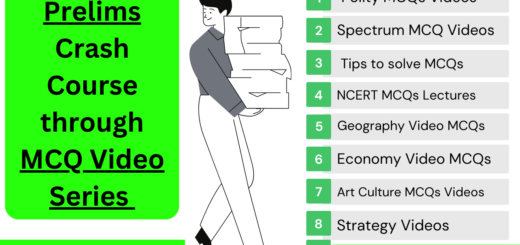Things which were available in Indus valley Civilisation and the things which were not available
The Indus Valley Civilisation, also known as the Harappan Civilisation, is one of the world’s earliest urban societies alongside those in Egypt and Mesopotamia. It left behind a legacy of exquisite town planning, engineering marvels, an undeciphered script, and numerous artifacts. This article will enlighten UPSC aspirants about the artifacts and aspects found and not found in the Indus Valley Civilisation.
Found in the Indus Valley Civilisation:
Urban Planning and Architecture: The Indus Valley Civilisation is celebrated for its excellent urban planning. The cities demonstrated sophisticated engineering, including well-planned drainage and water supply systems. The cities were divided into an upper citadel and a lower town, each with a brick wall for protection.
Seals and Scripts: Numerous seals, traditionally made from steatite, were found depicting various animals and divine beings, suggesting a rich cultural and religious life. Despite much effort, the script engraved on these seals remains undeciphered.
Pottery and Terracotta Figures: The people of the Indus Valley Civilization produced a diverse range of pottery, usually red or black, decorated with geometric designs. Terracotta figures, particularly of females, were also discovered, generally believed to have been used for religious ceremonies.
Agriculture and Trade: Indus Valley Civilization was agrarian. The fertile plains of the Indus River supported extensive agriculture, including wheat, barley, peas, and cotton cultivation. They engaged in extensive trade, both internal and with distant regions like Mesopotamia.
Non-Existence in the Indus Valley Civilisation:
Monumental Structures: Unlike Egyptian and Mesopotamian civilizations, the Indus Valley Civilisation left behind no monumental structures, such as temples, pyramids, or palaces. Their religious structures were modest, usually small, square worship places without much elaboration or decoration.
Iron Technology: While they were masters in utilizing bronze and copper, the people of the Indus Valley Civilisation did not have access to iron technology. The civilization declined before the Iron Age started.
Imagery of Rulers or Kings: Unlike many ancient civilizations, the Indus Valley people did not create large statues or carvings of rulers or kings. There is also a lack of evidence regarding individual rulers or dynasties.
Evidence of Military Activity: There is little evidence of military activities in the Indus Valley Civilisation, which may imply that they lived relatively peaceful lives. There were no specific structures identified as army barracks or weapons factories.
Deciphered Script: Despite numerous efforts, the Indus script remains undeciphered. The lack of a bilingual inscription, similar to the Rosetta Stone, complicates attempts to understand the linguistic system.
To summarise, the Indus Valley Civilisation, despite its sophistication, leaves many unanswered questions. Its stable and peaceful society, excellent town planning, undeciphered script makes it a fascinating area of study for UPSC aspirants. However, the lack of monumental structures, unknown rulers, and peaceful lifestyle sets it apart from contemporary civilizations, providing unique insight into ancient urban life. Aspiring civil servants could benefit from a comprehensive understanding of this civilization for their examination and subsequent service in the Indian Administrative Service.







